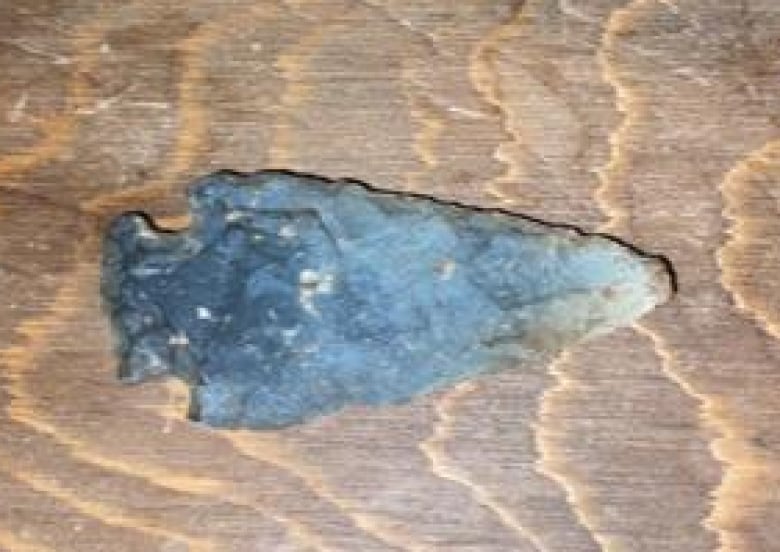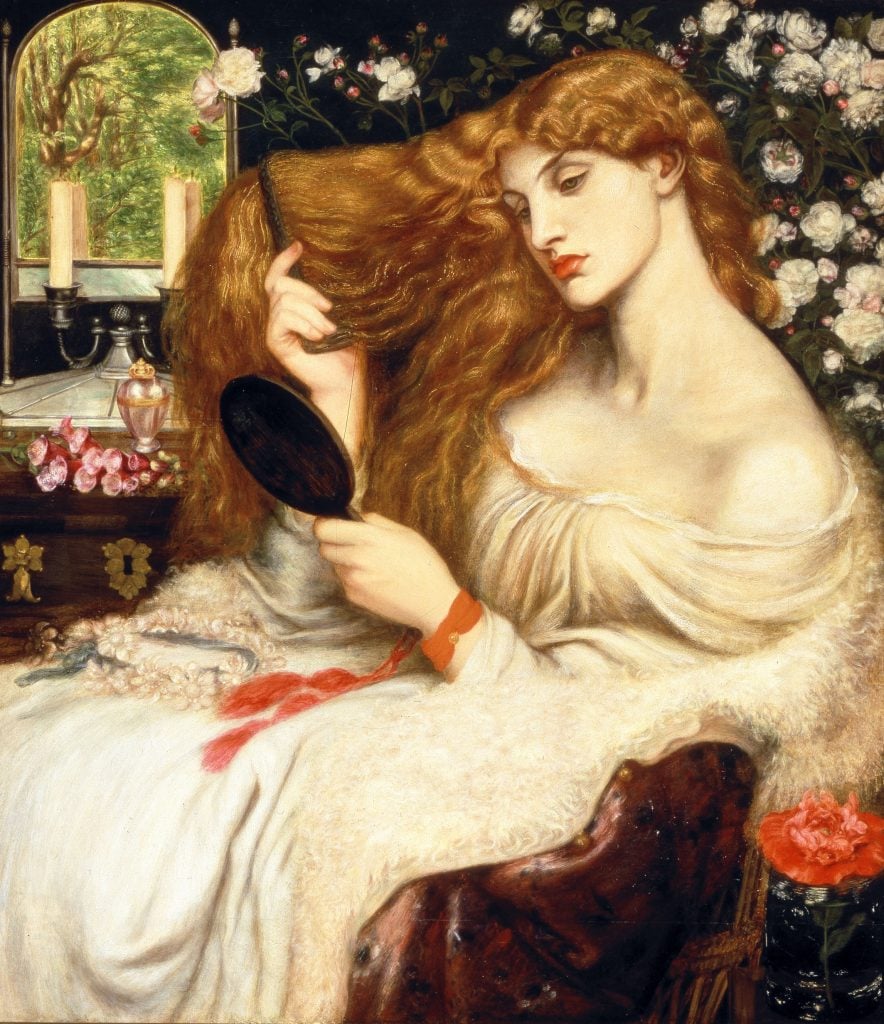Art
Dry summer shrinks N.S. lake, revealing 'works of art' in ancient Mi'kmaw artifacts – CBC.ca

The dry summer shrank a lake in Nova Scotia’s Annapolis Valley, revealing ancient Mi’kmaw artifacts and starting a conversation about how to best preserve such finds.
Aaron Taylor, an archeologist, has seen both recent finds — a point likely prepared for a spear and an arrowhead.
“They’re works of art,” he told CBC News in a phone interview. “The person making this, their family ate or didn’t eat, depending on how well their tools are [made].”
Taylor, who teaches at Saint Mary’s University and Acadia University, has excavated sites such as the Grand Pré UNESCO World Heritage site, Beechville Black Refugee site and the Gaspereau Lake pre-contact site.
Both recent finds were likely made and used about 1,500 years ago, he said, as the material came from a quarry Mi’kmaw people used around that time. The larger point was left half undone.
“Which means that the person using it was trying to make it into a point, but for some reason gave up on it, Taylor said. “It’s a beautiful piece, well-worked, but they didn’t continue on to create what was going to be an arrowhead or a point.”
Location shows Mi’kmaw trade routes
Taylor said it would likely have taken a skilled toolmaker half a day to turn the raw materials into a completed point. He speculates they may have detected a flaw in the stone that would have led it to break, so they abandoned it.
The point was found about 100 kilometres from the quarry, showing the long-distance trade routes Mi’kmaw people used, he said.
“The Mi’kmaq used rivers like we use highways,” he said. “All the rivers are places with high potential to find First Nations materials: points, arrowheads, scrappers, pottery.”
He said the people who made the artifacts likely lived in villages of 30-50 people and would have been well connected to other similarly sized Mi’kmaw villages and traded across Mi’kma’ki and into today’s Ohio Valley.
Taylor is working to create a better way to study the land and predict where Mi’kmaw people would have lived in different periods of their 13,000 years — and counting — in this land. That will make it easier to find artifacts and learn more about their lives, he said.
Currently, most finds are like these two recent ones where people stumble over them while hunting or fishing.
“It’s great to have it, but most of the information comes from what it was associated with. Where it was found, where in the stratum it was found,” he said.
A window into the deep past
Many such finds are eventually preserved at the Museum of Natural History in Halifax.
No one from the museum was available for an interview about these finds, but Katie Cottreau-Robins, curator of archeology at the museum, said the artifacts are “significant and speak to Mi’kmaw pre-history in the province.”
She said the changing climate has been exposing artifacts that long lay covered. More people contact the museum these days to share their finds, she said in an email.
She said if someone finds such an artifact, they should leave it in place and contact the museum.
“A new find may represent a new site. New sites contribute very important information to our collective understanding of the Mi’kmaq before and after the colonial presence,” she wrote.
“Some individuals have donated private collections of artifacts to the museum. The artifacts are visited and studied by the Mi’kmaq, students, community members, and the archeology professional community. They are exhibited and loaned to organizations and used in teaching and training.”
Roger Lewis, curator of ethnology at the museum, said publishing the location of such finds can lead to treasure hunting and “looting,” so CBC is not publishing the name of the lake where they were discovered.
Two modern fishers find ancient tools
Leah Stultz found the point while on a fishing trip in the Annapolis Valley.
“We were walking along where normally it would be filled with water, the lake bed, and I found it,” she said. “I noticed the colour first. It was so vibrant and out of place.”
She picked it up and put it in her pocket as a curiosity. She later learned of its significance.
Nicholas Clark found the arrowhead in the same area as he walked over the cracked earth that would usually be flooded.
“I was looking where I was walking so I wouldn’t break an ankle,” he said. “I noticed what looked like an arrowhead sitting in the mud.”
He collected the find and has stored it in his home for now.
MORE TOP STORIES
Art
Art Bites: Millais's Muse Fell Ill After Posing for 'Ophelia' – artnet News
What’s the deal with Leonardo’s harpsichord-viola? Why were Impressionists obsessed with the color purple? Art Bites brings you a surprising fact, lesser-known anecdote, or curious event from art history. These delightful nuggets shed light on the lives of famed artists and decode their practices, while adding new layers of intrigue to celebrated masterpieces.
Beauty is pain. Elizabeth Siddal, one of art history’s most famous muses, had intimate experience with this adage. Siddal first met artist Walter Deverell in 1849, the year she turned 20, while working for a London milliner and soon became a favored model of the Pre-Raphaelite Brotherhood artists. She was featured in William Holman Hunt’s A Converted British Family Sheltering a Christian Missionary from the Persecution of the Druids (1849–50) and most famously in John Everett Millais’s Ophelia (1851–52). It was during her contribution to the latter painting, that she fell ill.
Beauty was a matter of pain for Millais, too. In a rare move for artists of the era, he spent five months painting scenery for Ophelia in a hut along Surrey’s Hogsmill River. “My martyrdom is more trying than any I have hitherto experienced,” Millais remarked, describing “muscular” flies and powerful winds. “The painting of a picture under such circumstances would be a greater punishment to a murderer than hanging.”
The Tate notes that Millais devoted only four months to portraying Ophelia herself. Siddal agreed to stand in for the doomed beauty. She spent long hours in a bathtub at the artist’s Gower Street studio, wearing a cheap gown Millais acquired. “Today I have purchased a really splendid lady’s ancient dress—all flowered over in silver embroidery,” he wrote. “It cost me, old and dirty as it is, four pounds.” The dress is still in the Tate.
Millais arranged oil lamps beneath Siddall’s tub to keep her bathwater warm. One of those lamps went out. Millais didn’t notice, and Siddal didn’t complain—by then she knew that beauty means pain. The water grew so frigid that Siddall fell ill with pneumonia. Siddall’s father ordered Millais to cover her extensive medical bills. The artist allegedly made off paying the least possible amount.


Siddal in Dante Gabriel Rossetti’s Lady Lilith (1866–68; 1872–73). Collection of the Delaware Art Museum.
Siddal made a full recovery from her Ophelia-induced illness, but the bout proved foreshadowing. Siddall likely met Pre-Raphaelite Brotherhood painter Dante Gabriel Rossetti while they both sat for Deverell’s massive oil painting Twelfth Night, Act II, Scene IV (1850). Siddall fell for Rossetti, who made her his sole model. In 1853, Rossetti took Siddall on as an art student. He taught her to draw, and advised her to drop the last letter from her surname. By 1857, Siddal became one of the only women to exhibit alongside the Pre-Raphaelites. Over the next 15 years, she produced numerous drawings, paintings, and poems, often inspired by Lord Tennyson, her favorite poet since discovering his verses on a butter wrapping as a kid.
As time wore on, Siddal grew fearful that her philandering beau would abandon her for a younger muse. While Rossetti resisted their marriage due to Siddal’s working class background, the two wed in 1860. It wasn’t enough to stave off her consumptive melancholy. Siddal died from a laudanum overdose, a rumored suicide, in 1862—decades before 1894, when Ophelia was included the original Henry Tate gift. It’s one of the museum’s most popular paintings today, due in no small part to Siddal’s sublime beauty, the pain it brought her.
Follow Artnet News on Facebook:
Want to stay ahead of the art world? Subscribe to our newsletter to get the breaking news, eye-opening interviews, and incisive critical takes that drive the conversation forward.
Art
Striking Art Gallery of Ontario workers reach tentative deal with museum – Toronto Star


/* OOVVUU Targeting */
const path = ‘/news/canada’;
const siteName = ‘thestar.com’;
let domain = ‘thestar.com’;
if (siteName === ‘thestar.com’)
domain = ‘thestar.com’;
else if (siteName === ‘niagarafallsreview.ca’)
domain = ‘niagara_falls_review’;
else if (siteName === ‘stcatharinesstandard.ca’)
domain = ‘st_catharines_standard’;
else if (siteName === ‘thepeterboroughexaminer.com’)
domain = ‘the_peterborough_examiner’;
else if (siteName === ‘therecord.com’)
domain = ‘the_record’;
else if (siteName === ‘thespec.com’)
domain = ‘the_spec’;
else if (siteName === ‘wellandtribune.ca’)
domain = ‘welland_tribune’;
else if (siteName === ‘bramptonguardian.com’)
domain = ‘brampton_guardian’;
else if (siteName === ‘caledonenterprise.com’)
domain = ‘caledon_enterprise’;
else if (siteName === ‘cambridgetimes.ca’)
domain = ‘cambridge_times’;
else if (siteName === ‘durhamregion.com’)
domain = ‘durham_region’;
else if (siteName === ‘guelphmercury.com’)
domain = ‘guelph_mercury’;
else if (siteName === ‘insidehalton.com’)
domain = ‘inside_halton’;
else if (siteName === ‘insideottawavalley.com’)
domain = ‘inside_ottawa_valley’;
else if (siteName === ‘mississauga.com’)
domain = ‘mississauga’;
else if (siteName === ‘muskokaregion.com’)
domain = ‘muskoka_region’;
else if (siteName === ‘newhamburgindependent.ca’)
domain = ‘new_hamburg_independent’;
else if (siteName === ‘niagarathisweek.com’)
domain = ‘niagara_this_week’;
else if (siteName === ‘northbaynipissing.com’)
domain = ‘north_bay_nipissing’;
else if (siteName === ‘northumberlandnews.com’)
domain = ‘northumberland_news’;
else if (siteName === ‘orangeville.com’)
domain = ‘orangeville’;
else if (siteName === ‘ourwindsor.ca’)
domain = ‘our_windsor’;
else if (siteName === ‘parrysound.com’)
domain = ‘parrysound’;
else if (siteName === ‘simcoe.com’)
domain = ‘simcoe’;
else if (siteName === ‘theifp.ca’)
domain = ‘the_ifp’;
else if (siteName === ‘waterloochronicle.ca’)
domain = ‘waterloo_chronicle’;
else if (siteName === ‘yorkregion.com’)
domain = ‘york_region’;
let sectionTag = ”;
try
if (domain === ‘thestar.com’ && path.indexOf(‘wires/’) = 0)
sectionTag = ‘/business’;
else if (path.indexOf(‘/autos’) >= 0)
sectionTag = ‘/autos’;
else if (path.indexOf(‘/entertainment’) >= 0)
sectionTag = ‘/entertainment’;
else if (path.indexOf(‘/life’) >= 0)
sectionTag = ‘/life’;
else if (path.indexOf(‘/news’) >= 0)
sectionTag = ‘/news’;
else if (path.indexOf(‘/politics’) >= 0)
sectionTag = ‘/politics’;
else if (path.indexOf(‘/sports’) >= 0)
sectionTag = ‘/sports’;
else if (path.indexOf(‘/opinion’) >= 0)
sectionTag = ‘/opinion’;
} catch (ex)
const descriptionUrl = ‘window.location.href’;
const vid = ‘mediainfo.reference_id’;
const cmsId = ‘2665777’;
let url = `https://pubads.g.doubleclick.net/gampad/ads?iu=/58580620/$domain/video/oovvuu$sectionTag&description_url=$descriptionUrl&vid=$vid&cmsid=$cmsId&tfcd=0&npa=0&sz=640×480&ad_rule=0&gdfp_req=1&output=vast&unviewed_position_start=1&env=vp&impl=s&correlator=`;
url = url.split(‘ ‘).join(”);
window.oovvuuReplacementAdServerURL = url;
TORONTO – The union representing hundreds of striking Art Gallery of Ontario workers says it’s reached a tentative deal with the museum.
The Ontario Public Service Employees Union says they reached the deal late last night, after 16 hours of bargaining.
function buildUserSwitchAccountsForm()
var form = document.getElementById(‘user-local-logout-form-switch-accounts’);
if (form) return;
// build form with javascript since having a form element here breaks the payment modal.
var switchForm = document.createElement(‘form’);
switchForm.setAttribute(‘id’,’user-local-logout-form-switch-accounts’);
switchForm.setAttribute(‘method’,’post’);
switchForm.setAttribute(‘action’,’https://www.thestar.com/tncms/auth/logout/?return=https://www.thestar.com/users/login/?referer_url=https%3A%2F%2Fwww.thestar.com%2Fnews%2Fcanada%2Fstriking-art-gallery-of-ontario-workers-reach-tentative-deal-with-museum%2Farticle_f93dfb4a-141d-5144-bb61-41d842fc7153.html’);
switchForm.setAttribute(‘style’,’display:none;’);
var refUrl = document.createElement(‘input’); //input element, text
refUrl.setAttribute(‘type’,’hidden’);
refUrl.setAttribute(‘name’,’referer_url’);
refUrl.setAttribute(‘value’,’https://www.thestar.com/news/canada/striking-art-gallery-of-ontario-workers-reach-tentative-deal-with-museum/article_f93dfb4a-141d-5144-bb61-41d842fc7153.html’);
var submit = document.createElement(‘input’);
submit.setAttribute(‘type’,’submit’);
submit.setAttribute(‘name’,’logout’);
submit.setAttribute(‘value’,’Logout’);
switchForm.appendChild(refUrl);
switchForm.appendChild(submit);
document.getElementsByTagName(‘body’)[0].appendChild(switchForm);
function handleUserSwitchAccounts()
window.sessionStorage.removeItem(‘bd-viafoura-oidc’); // clear viafoura JWT token
// logout user before sending them to login page via return url
document.getElementById(‘user-local-logout-form-switch-accounts’).submit();
return false;
buildUserSwitchAccountsForm();
console.log(‘=====> bRemoveLastParagraph: ‘,0);
Art
Striking Art Gallery of Ontario workers reach tentative deal with museum – The Globe and Mail


The union representing hundreds of striking Art Gallery of Ontario workers says it’s reached a tentative deal with the museum.
The Ontario Public Service Employees Union says they reached the deal late last night, after 16 hours of bargaining.
The downtown Toronto museum has been closed for a month while more than 400 workers represented by OPSEU – including assistant curators, archivists and food and hospitality staff – were on strike.
They walked off the job after rejecting an offer from the AGO, which the union said failed to address key issues such as wage increases, protections for part-time workers and contracting out positions.
The union didn’t share details about their new tentative deal, which will soon go to a vote among the members, and the AGO did not immediately respond to a request for comment.
No information was immediately available about when the AGO would reopen.
The union has previously said that part-time employees make up more than 60 per cent of the AGO’s work force, and they earn an average of $34,380 per year.
-



 Science24 hours ago
Science24 hours agoNASA Celebrates As 1977’s Voyager 1 Phones Home At Last
-



 Politics23 hours ago
Politics23 hours agoPecker’s Trump Trial Testimony Is a Lesson in Power Politics
-
Media23 hours ago
B.C. puts online harms bill on hold after agreement with social media companies
-
Media17 hours ago
B.C. online harms bill on hold after deal with social media firms
-
Business23 hours ago
Oil Firms Doubtful Trans Mountain Pipeline Will Start Full Service by May 1st
-
Media22 hours ago
Trump poised to clinch US$1.3-billion social media company stock award
-
Real eState18 hours ago
Montreal tenant forced to pay his landlord’s taxes offers advice to other renters
-



 Politics17 hours ago
Politics17 hours agoPolitics Briefing: Younger demographics not swayed by federal budget benefits targeted at them, poll indicates




